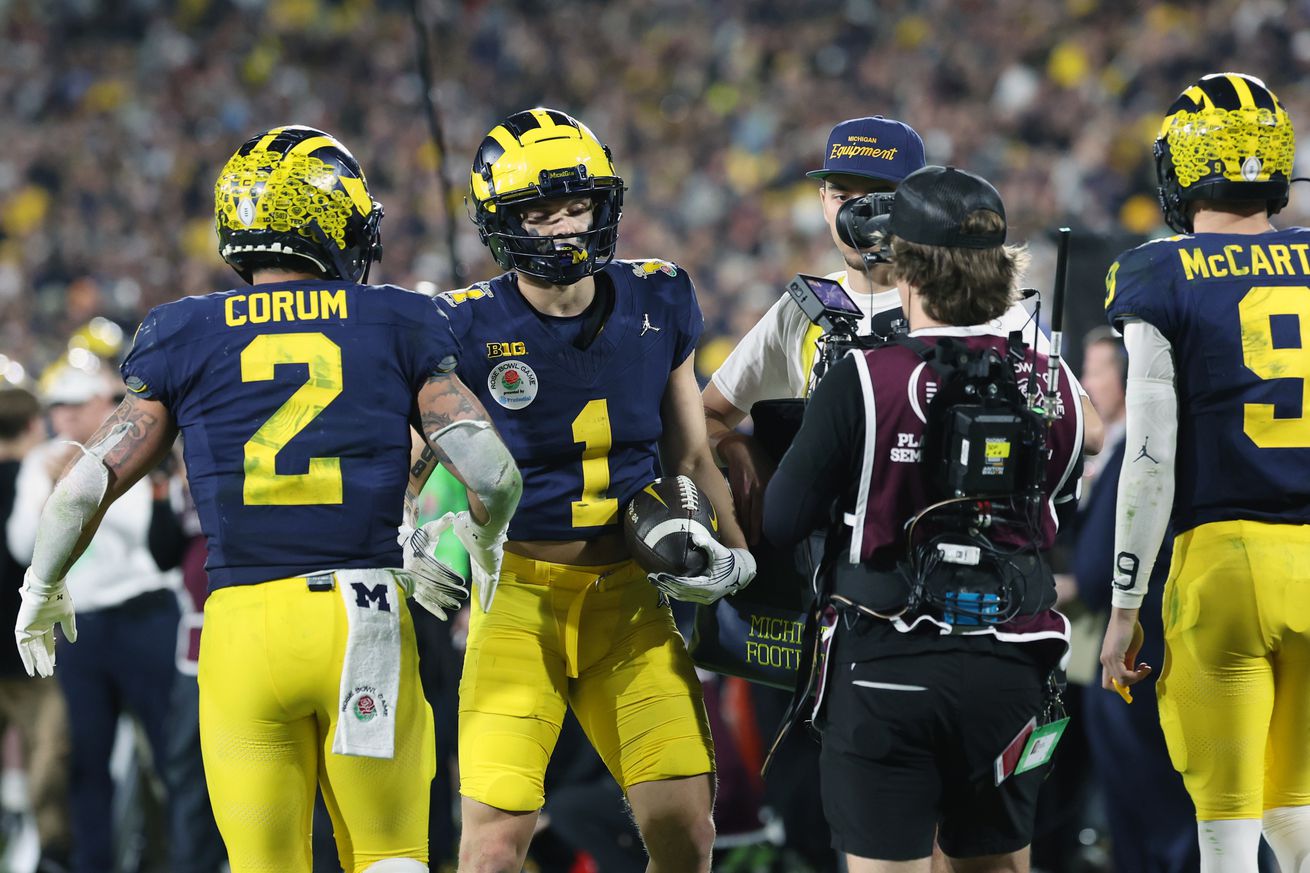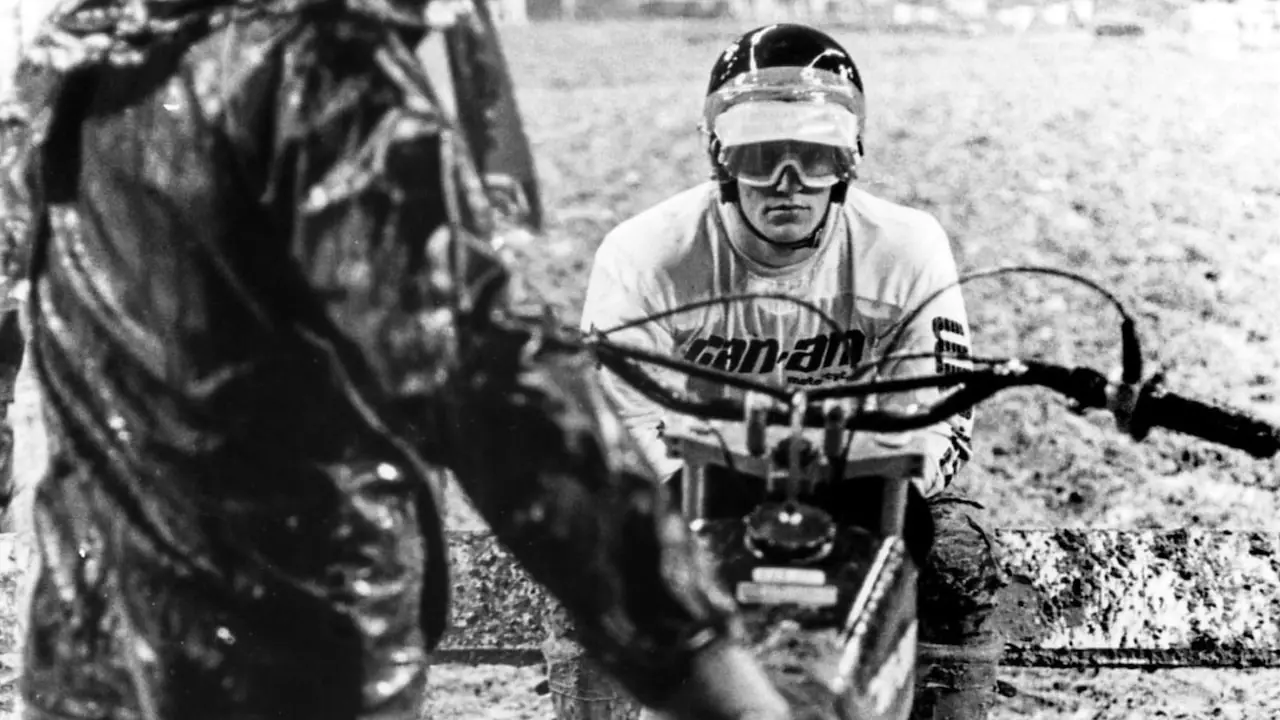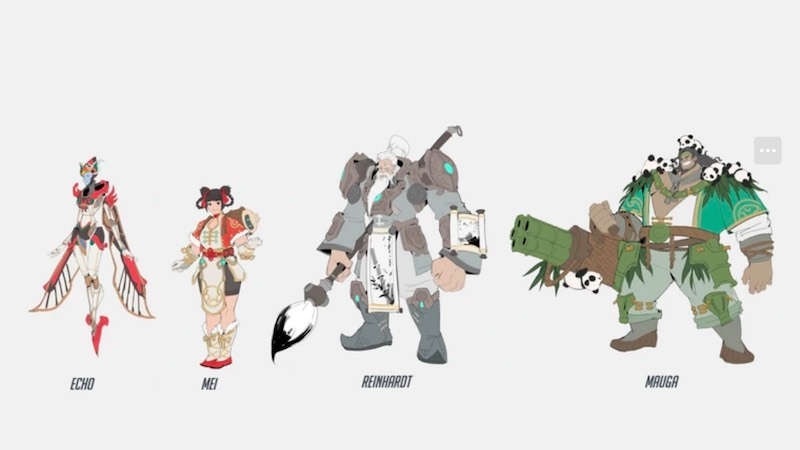
Roman Wilson recently remarked that he expected Jim Harbaugh to draft a number of Michigan prospects. With so many in this year’s draft, is that likely? How often have former college head coaches drafted from their previous stops?
In a recent episode of the NFL on Fox Podcast, former Michigan wide receiver Roman Wilson remarked that he wouldn’t be surprised if Jim Harbaugh’s Los Angeles Chargers drafted a number of Michigan alums in the upcoming 2024 NFL Draft.
Intuitively, that’s pretty appealing — it’s a national championship team and five of their players could get drafted in the first two rounds between quarterback J.J. McCarthy, defensive tackle Kris Jenkins, linebacker Junior Colson, cornerback Mike Sainristil and Wilson himself.
Another two — running back Blake Corum and offensive lineman Zak Zinter — could be drafted inside the top 100 while tight end AJ Barner, receiver Cornelius Johnson, edge rusher Jaylen Harrell, edge rusher Braiden McGregor, and linebacker Michael Barrett could all end up hearing their names called by the end of Saturday, as could the offensive linemen: Trevor Keegan, Drake Nugent, Ladarius Henderson and Trente Jones.
That’s 16 potential draftees with another two — cornerback Josh Wallace and offensive lineman Karsen Barnhart — as dark horses to be selected as well.
Eagle-eyed readers might have noticed that this class includes six offensive linemen from Michigan — more offensive linemen than one typically puts on the field and also a position of need for the Los Angeles Chargers.
With two receivers and a defensive tackle — two if we count unlikely-to-be-drafted Cam Goode — eligible this year, it seems more likely than not that the Chargers just stumble into a Michigan player whether or not they had their former head coach running their operation.
Given the warm reception Harbaugh received from his former players at the Michigan pro day, it seems particularly appealing.
jim is rly just one of the guys pic.twitter.com/j3vMNWoj50
— Los Angeles Chargers (@chargers) April 11, 2024
But how often does that happen, generally? We can look at the history of college coaches entering the NFL to see how often they go after players they already coached.
Going back to the year 2000, there have been 12 coaches who have made the leap from college into the NFL, including Harbaugh himself when he jumped from Stanford to the San Francisco 49ers.
For the most part, it’s difficult to get hired into an NFL job without success at the college level, so there’s generally a pretty good pool of talent to draw from. That said, overperformers or innovators can find themselves in that position, like Matt Rhule from Baylor, Kliff Kingsbury from Texas Tech, Doug Marrone from Syracuse and Greg Schiano from Rutgers.
Some, like Harbaugh and Bill O’Brien, had previous NFL experience. That doesn’t mean much for this analysis but could be worth noting if we find an anomaly in the data regarding those two.
What Does the Data Show?
It does seem intuitive — after all, Kelly’s Eagles rostered six Oregon Ducks in Kelly’s final year as head coach and Schiano rostered seven Rutgers Scarlet Knights, six of whom took offensive or defensive snaps. That last statistic is pretty wild because only 24 former Rutgers players took snaps from scrimmage in 2013.
Schiano’s Buccaneers were responsible for 25 percent of the Scarlet Knights who took snaps in 2013 and 27.7 percent of the total snap count of those alums.
So we should expect that those teams might overdraft players from schools that their coaches recently arrived from, right?
Well, Harbaugh’s 49ers didn’t select a single Stanford player over the four years he was their head coach despite 17 former members of the Cardinal worthy of a draft pick over that span of time. The 49ers had 40 draft picks to work with and eschewed former Stanford players. Only two alum were on the roster in Harbaugh’s final year.
But those are limited samples to work with and we aren’t interested in free agency. What does the aggregated data say?
Between 2000 and 2023, coaches of NFL teams just coming off of a stint as a college head coach had 105 selections to work with in their first NFL draft. They spent five of those selections on alums of colleges that they had just coached, or 4.8 percent of them.
That seems small, but those same colleges only earned 48 total selections of the 2,951 remaining picks of those drafts — 1.6 percent. That means those teams were nearly three times as likely to select players from the schools head coaches had just arrived from.
That’s a remarkably small sample to work with, however. Had Meyer not been able to draft Luke Farrell in the fifth round, the proportion would change from 2.93 times the likelihood to 2.29 times.
Not only that, a good portion of those came in 2001, when Butch Davis’ Cleveland Browns selected running back James Jackson and wide receiver Andre King from the University of Miami in the third and seventh round, respectively.
If we were tighter with the sample — just the last 20 years, for example — we would have excluded that Davis team. That changes the likelihood to just 2.42 times the proportion of the draft in general.
That’s still more than we’d expect than if there were no effect, but it should be additionally noted that teams do not go dramatically out of their way to draft alums. There were rumors that Marrone’s Bills, Kelly’s Eagles and O’Brien’s Texans would maneuver their way into selecting their respective quarterbacks in the first drafts those coaches would have when those teams needed one.
Instead, the Bills selected E.J. Manuel in the first round in 2013 over Ryan Nassib, who went in the fourth round. In 2015, the Eagles didn’t trade up to the second overall pick to select Marcus Mariota, sticking with Sam Bradford and Mark Sanchez. And the Texans, in 2016, opted to stick with Brock Osweiler over selecting Christian Hackenberg.
That’s not an entirely fair accounting of course; the Eagles actually did try to trade up to the second overall pick and failed, though they also allowed the Dolphins to snipe them for Dion Jordan in 2013.
We should reasonably expect a slight preference for Michigan players. Of all the draftable candidates over the sample data, teams with former college coaches accounted for 9.4 percent of those alums’ draft picks.
Wilson said perhaps “five or six” Michigan players, after joking about all nine Chargers draft picks devoted to Wolverines, but that’s a bit much. With something like 15 draftable candidates, a nine percent rate would mean that one Michigan player ends up on the team— especially with so many eligible former Wolverines staffing positions of need for the Chargers.
Another way to look at it is that about half the teams in the league will end up with a Michigan player after this year’s draft. Because teams of former college head coaches are 2-3 times more likely to select a player from that college, there’s a good chance one of those players ends up on the Chargers.
Who do you think it will be?


















You must be logged in to post a comment Login